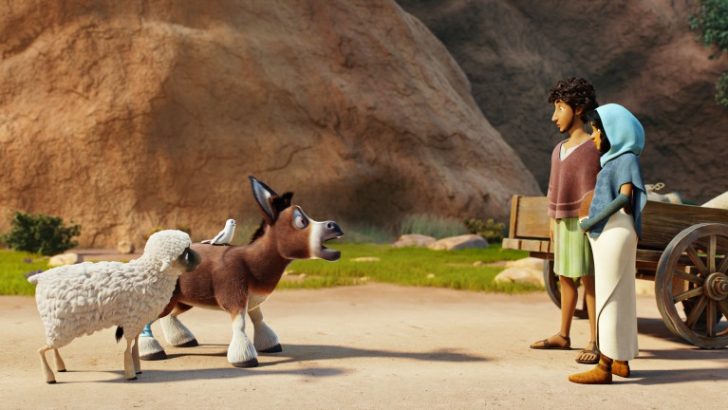The Notebook
Fr Bernard Healy
The release of an animated movie called The Star caught my attention. The premise of the film – an imaginative telling of the Nativity focusing on the donkey and his animal companions reminded me that we have a plethora of traditions about various animals associated with the Christmas story.
Back in 2012, Pope Benedict XVI’s book Jesus of Nazareth: The Infancy Narratives came in for some unfair criticism. The then-Pope pointed out that the Gospels themselves make no direct reference to the donkey or the ox in the stable. Some journalists suggested that Benedict wanted us to banish the animals from our cribs forthwith!
Nothing could have been further from the truth. A few sentences after pointing out their absence from the Gospels, Pope Benedict wrote: “No representation of the crib is complete without the ox and the ass.” He noted that the prophesy of Isaiah 1:3 “The ox knows its owner, and the ass its master’s crib; but Israel does not know, my people does not understand,” gives ample biblical justification for their presence.
Pope Benedict also suggests that the presence of the ox and ass – traditionally symbolising the Jews and Gentiles, points to the ultimate recognition of Christ by all humanity. The camels who accompany the Magi also receive scriptural warrant when we look at Psalm 72 and Isaiah 60, whilst the presence of the flocks with their shepherds can be found in the second chapter of Luke.
Traditions
Our own Irish folklore tradition adds a number of legends about the animals related to the Christmas story. Pádraig Ó Héalaí’s 2012 book An Slánaitheoir ag Siúl ar an Talamh is a collection of all manner of tales and traditions touching on the events of the New Testament.
He records a tradition that when Our Lady and St Joseph had to flee Herod’s persecution and head to Egypt that the cow and the horse refused to carry them. The penance levied on the cow is that she would have to chew her food twice, thus explaining why cows chew the cud. Likewise, the horse was cursed with an insatiable appetite, eating at every chance he can.
The fact that he refused the Holy Family is also said to explain why the horse must sleep standing up and why a horse’s broken leg refuses to heal!
The humble donkey, on the other hand, willingly carried the Holy Family to safety. The cross on his back is a reminder of that good deed. It is also said that donkeys have a black mark on their feet, showing the spot where Our Lady rested her hand in the stable in Bethlehem.
The tendency of the donkey to lie down when a hand is placed on his back is said to be a reminder that he lay down when Mary placed her hand on his back.
Birds also have an amount of Christmas folklore about them
Marking St Stephen’s Day with ‘the wran’ is still the custom in many places. It is said that the wren betrayed St Stephen. Thankfully the hunting of an actual wren on this day is no longer part of the tradition.
The robin is the quintessential Christmas bird. Some say that his red breast is due to the blood falling from the Cross landing on him. However, there are other stories more closely connected to Christmas.
One states that as the Holy Family fled Herod, either Mary or Joseph cut a foot on brambles leaving a trail of blood. The robin mopped up this blood to prevent their being followed. Another story says that the robin was the only bird to recognise the Infant Jesus as King, and so the Child Jesus touched his breast.
The robin blushed scarlet on account of this honour!
It’s important for us to remember our own folklore
UCD’s Irish Folklore Commission Collection, the repository of much of our religious folklore, was recently recognised by UNESCO as part of its Memory of the World Register.
It would be well for us to remember our folklore too! The religious stories of our ancestors challenge us to remember that the events of the New Testament flows into our own reality, and that the sacred is always breaking through into the mundane.
Even if the tales aren’t true, they are worth repeating.


 A sheep and a donkey meeting Mary and Joseph in The Star
A sheep and a donkey meeting Mary and Joseph in The Star 